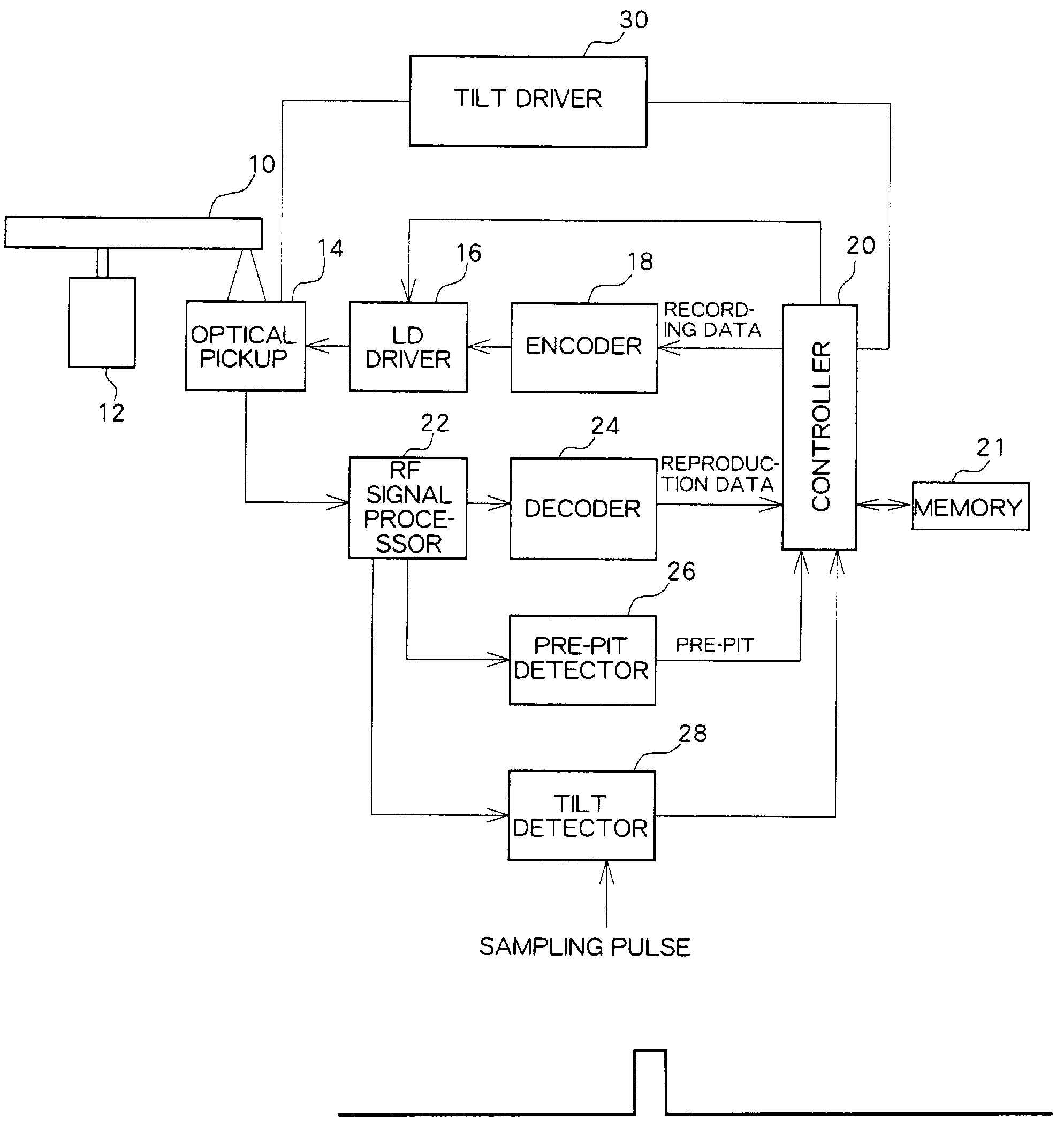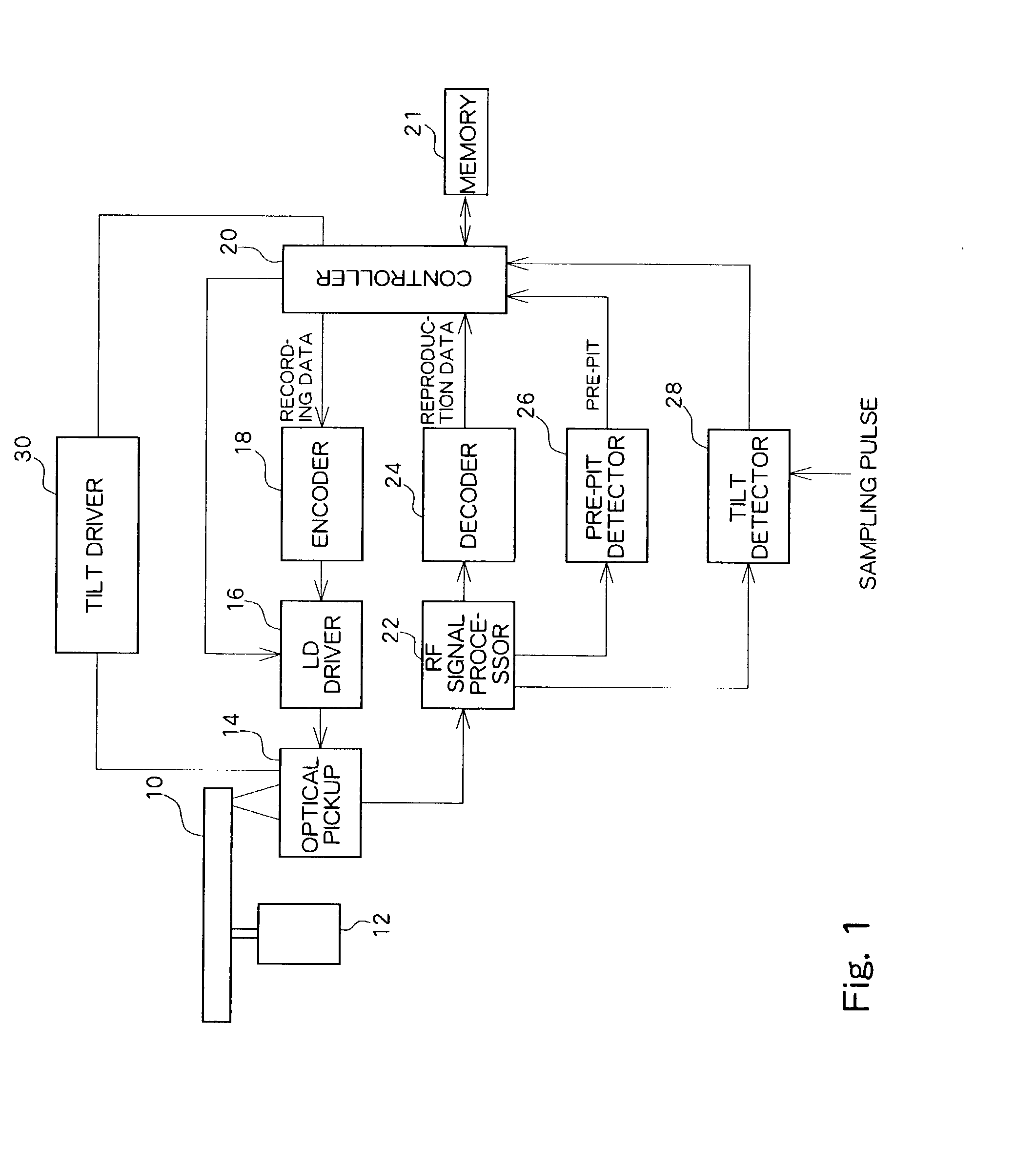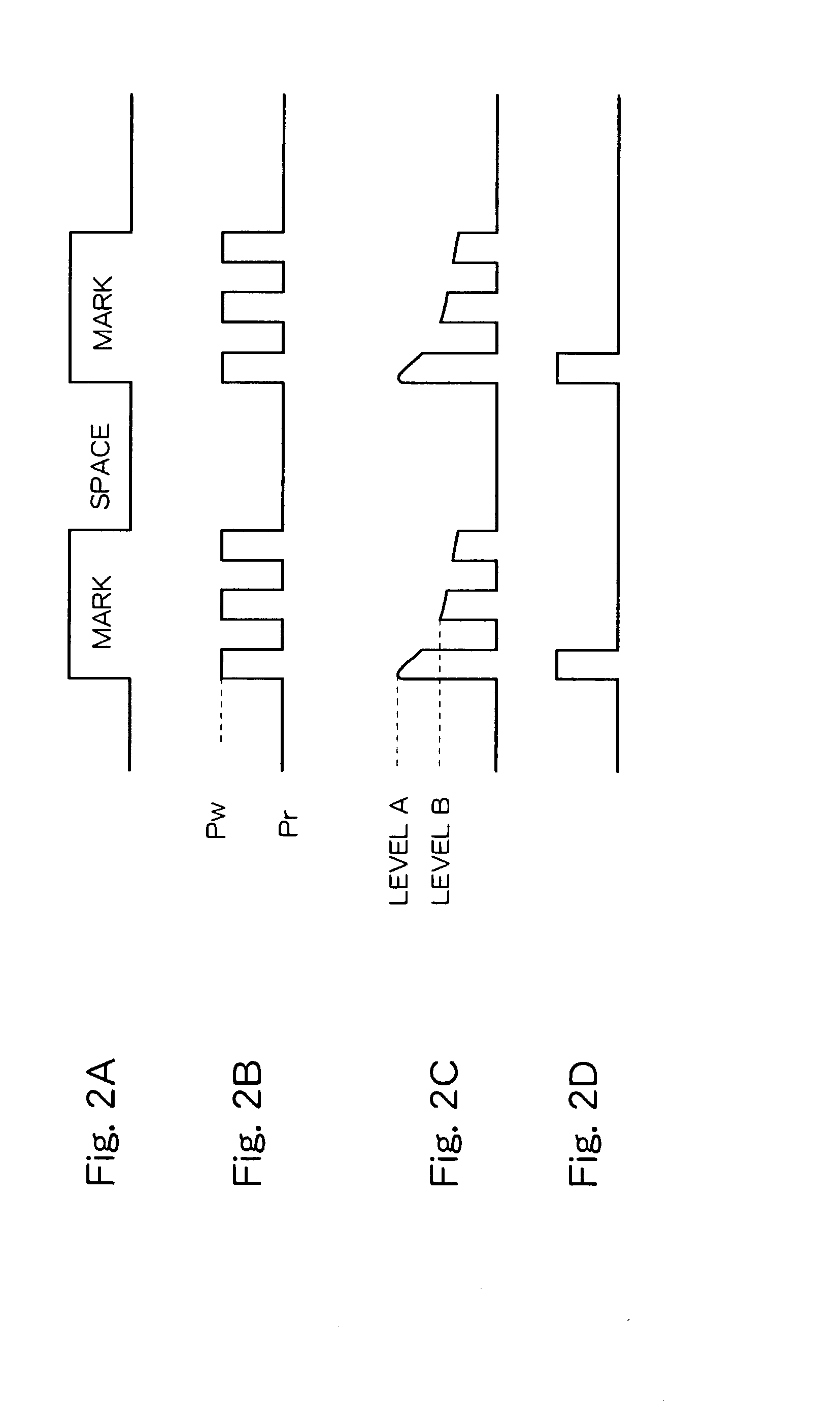Optical disc apparatus
a technology of optical discs and optical discs, applied in the field of optical disc apparatuses, can solve the problems of increasing the overall cost of the apparatus, the inability to maintain the stability of data recording/reproduction, and the power of the laser light, so as to reduce the amount of reflected light, and reduce the effect of reflected ligh
- Summary
- Abstract
- Description
- Claims
- Application Information
AI Technical Summary
Benefits of technology
Problems solved by technology
Method used
Image
Examples
Embodiment Construction
[0038]A preferred embodiment of the present invention will be described below while referring to the drawings.
[0039]FIG. 1 is a block diagram showing a configuration of an optical disc apparatus according to the present embodiment. An optical disc 10 is driven by a spindle motor 12 to be rotated at CAV (or CLV).
[0040]An optical pickup 14 placed so as to oppose the optical disc 10 irradiates laser light at recording power onto the optical disc 10 to record data, or irradiates laser light at reproducing power onto the optical disc 10 to reproduce data. During data recording, recording data obtained from a controller 20 is modulated by an encoder 18 and converted to a driving signal at a LD driver 16 so as to drive laser diodes (LD) of the optical pickup 14. During data reproduction, the amount of reflected light is converted to an electric signal by a four-segmented photo detector in the optical pickup 14. The converted electric signal is provided to an RF signal processor 22 and pass...
PUM
| Property | Measurement | Unit |
|---|---|---|
| power | aaaaa | aaaaa |
| time | aaaaa | aaaaa |
| optical axis | aaaaa | aaaaa |
Abstract
Description
Claims
Application Information
 Login to View More
Login to View More - R&D
- Intellectual Property
- Life Sciences
- Materials
- Tech Scout
- Unparalleled Data Quality
- Higher Quality Content
- 60% Fewer Hallucinations
Browse by: Latest US Patents, China's latest patents, Technical Efficacy Thesaurus, Application Domain, Technology Topic, Popular Technical Reports.
© 2025 PatSnap. All rights reserved.Legal|Privacy policy|Modern Slavery Act Transparency Statement|Sitemap|About US| Contact US: help@patsnap.com



